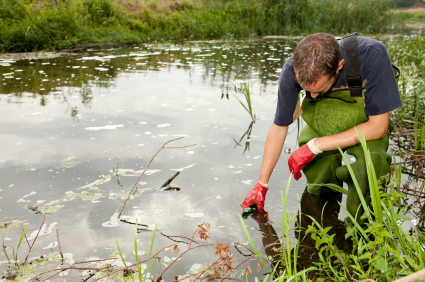On April 26, the Alliance for Water Stewardship (AWS) and World Wildlife Fund (WWF) held a consultation session in Toronto to discuss the first draft of the AWS International Water Stewardship Standard. Water Canada spoke with Lisa Downes, AWS North America’s regional initiative coordinator, to learn more about the standard.
Water Canada: What’s the purpose and value of an international standard for water stewardship?
Lisa Downes: This voluntary standard for water users and water service providers would outline the actions that they can take to improve the social and economic impacts associated with their water use. Ultimately, the standard would result in a third-party verification mechanism, so that water stewards would receive recognition.
In our first draft, there is demonstrated value in achieving certification even before the recognition stage. Following the standard will help utilities to ensure the sustainability of their water supply for future use. It could help reduce cost associated with treatment and pumping, for instance. It would also help to ensure that the environment in which a user operates continues to have viability through minimized impact. Starting the dialogue can help define concerns and help water users and utilities to work collaboratively to collectively reduce water risk and improve water security.
An added benefit to certification is verifiability. Consumers are often concerned about greenwashing (or, in this case, bluewashing) and see mixed claims about how “green” and “sustainable” an enterprise might be. It can be difficult for consumers to identify and sort through those claims. Sometimes it’s a fancy window dressing that isn’t actually doing much. The standard would provide a uniform mechanism for water stewardship—a level playing field for minimum requirements and beyond. It would establish a minimum baseline with a robust set of commitments. Third-party verification increases the transparency behind the process.
How will the AWS standard be different from similar accreditation programs, such as LEED, FSC, and BREEAM?
Where there are some components of water in existing standards, none really focus on fresh water use across sectors. Another important part of the standard is the governance component, which requires users to work with others collaboratively manage the resource.
A lot of times when people hear the word “standard,” they think about meeting a numeric value. Although there are quality and quantity requirements involved, the AWS standard also looks at capacity building in social, economic, and environmental areas. We’re encouraging users to talk with others in their watershed.
To the extent where there are related initiatives, we’d like to work with them. LEED, FSC, that’s one reason that we’re part of the ISEAL Alliance—it provides a code of good practice for setting social and environmental standards.
You held your Toronto event in collaboration with the WWF, whose representatives discussed the NGO’s new water risk filter [see more in Water Canada’s May/June 2012 issue]. How does this tool fit into AWS’ agenda?
The AWS standard is intended to build upon and link together a number of different tools. It’s not prescriptive, but, to the extent possible, we identify the tools and let users make the assessment themselves.
The water risk filter is important for a number of reasons: there is strong science behind it, it’s reliable, and it’s accessible. It’s a good entry point for water managers and CSR professionals who are new to the concept of water as a risk. It’s free, easy to use, communicates the case, and crystallizes why users should care.
Once users understand, how can they respond to mitigate those risks? That’s where the AWS standard comes in—we don’t want to duplicate anything, though. We want to work together. Take the CDP’s Water Disclosure project. Reporting components could help meet the requirements of the AWS standard. The more we can work together, the better. We want to provide solutions, and this is a way for us to help water users begin making a difference.
How far down the supply chain should stewardship certification go? Is there a difference between what big businesses and SMEs can accomplish? Do you have further questions about the AWS standard? The first draft comment period ends on June 15, 2012. Review the draft and related documents and submit your comments here.









